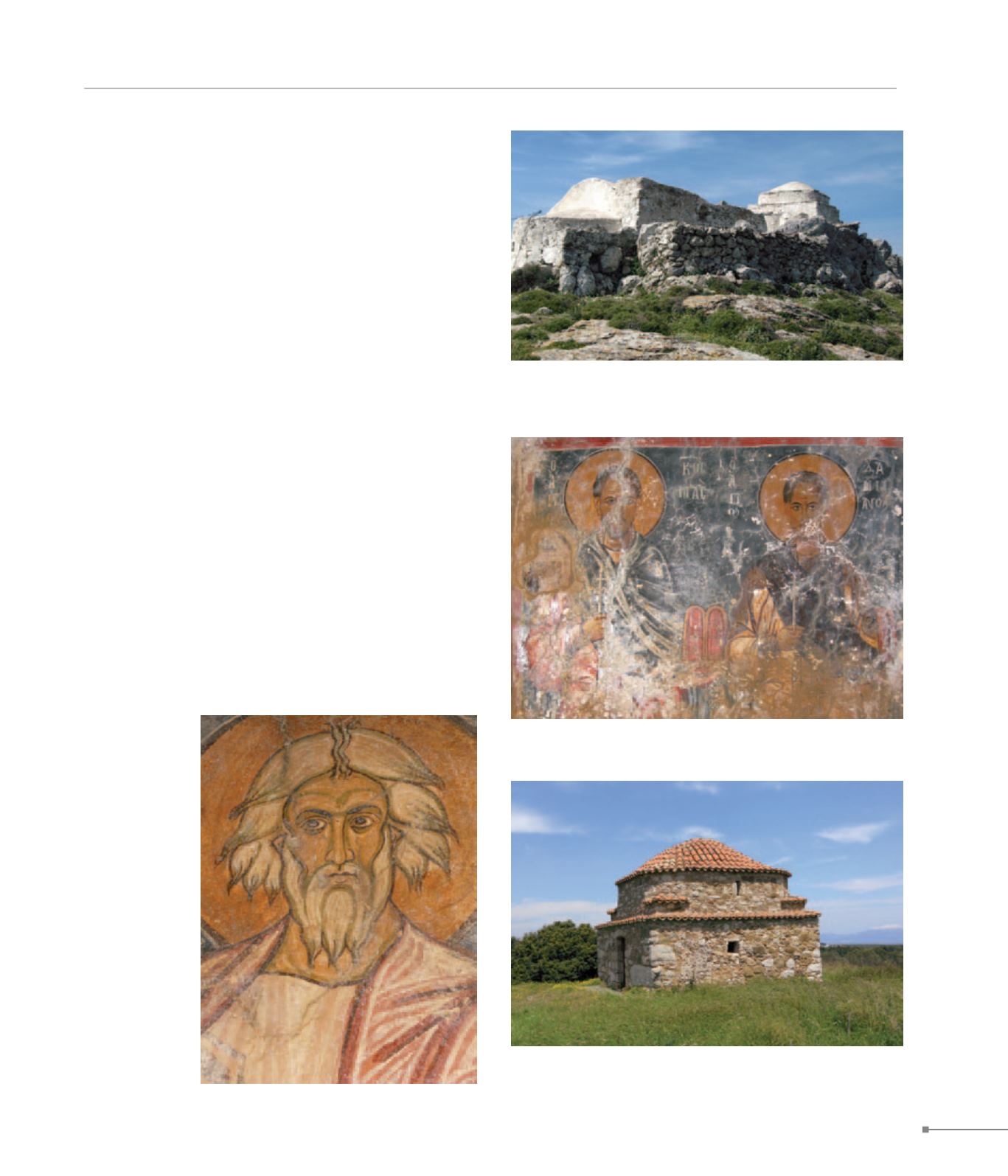
Cythera.
Cythera.
PELOPONNESE
229
323. Cythera, Aghios Andreas at Perlegianika, wall painting (Κύθηρα,
Άγιος Ανδρέας στα Περλεγγιάνικα, τοιχογραφία)
323. Cythera, Saint George and Panagia at Vouno (Κύθηρα, Άγιος
Γεώργιος και Παναγία στο Βουνό)
extension of Mani, initially had close political relations with
the despot of Sparta (local governor: Georgios Pachys, 12th
c.) and later with Monemvasia (local governor: Nikolaos Eu-
daimonogiannis, 13th c.). It followed the same path as these
areas concerning ecclesiastical art, which was opulent in the
13th c.; this era was crucial for the island’s historical fate as
after 1204 it was passed to the Venetian Venier family by the
Crusaders. After a short interruption of Venetian rule, when the
Byzantines prevailed (liberated by Monemvasian Pavlos No-
taras with two comrades, 1275-1302), Cythera was returned to
the Veniers, from whom it was eventually taken in 1363, and
was then ruled by the Most Serene Republic of Venice until
1797, interrupted by brief Turkish occupation in 1715-18. At
this period, especially in the 14th and 15th c., ecclesiastical ar-
chitecture and painting displayed an artistic tendency towards
Cretan art. Concerning ecclesiastical diocese, Cythera – as
part of Eastern Illirycum – was in the jurisdiction of the Pope
of Rome until the 8th c., when it came under the Ecumenical
Patriarchate of Constantinople. There is information indicating
the existence of the episcopal see of Cythera from the 12th
c. (Bishop Theoktistos: †1110; Bishop Neilos: 1122), which
was transferred in 1301 from the bishopric of Corinth to the
bishopric of Monemvasia via a chrysobull of Andronicus II Pal-
aeologus.
Early Christian settlements have been detected at Palaikastro-
Kastri (12) and an installation at Aghios Georgios in Vouno
(10), and perhaps in Potamos (3). During Arab raids the is-
land was deserted. Subsequent sources attest that when it
was reinhabited from the 10th c. onwards, the new inhabitants
settled at Kolokythia near Aghia Pelagia, at Mitata and at Pota-
323. Cythera,
Aghios Demetrios
at Pourkos, wall
painting (Κύθηρα,
Άγιος Δημήτριος
στο Πούρκο,
τοιχογραφία)
323. Cythera, Aghios Nikon at Zaglanikianika, wall painting (Kύθηρα,
Άγιος Νίκων στα Ζαγλανικιάνικα)


